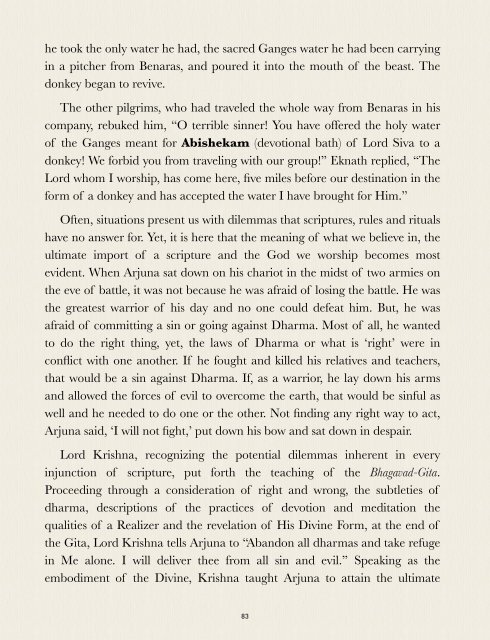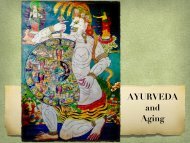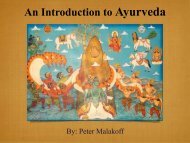How Thoreau's Walden Pond Mixed with the Ganges and Yoga Came to America with Swami Vivekananda
One early morning in 1846, during the coldest days of a New England winter, Henry David Thoreau looked out the window of his small cabin on Walden Pond and saw men cutting its ice into blocks. That ice was hauled by horse to a railroad that ran across the western edge of Walden Pond, packed into a boxcar, taken to Boston and loaded onto a clipper ship that sailed to Calcutta, India, arriving about four months later. Once there, that ice was purchased by grateful members of the East India Company. Thoreau had witnessed a small part of the global ice trade between New England and India that took place during the latter part of the nineteenth century. When Thoreau considered the ice trade, his vision sailed on metaphors far beyond the scope of business. The waters he imagined flowed both east and west and carried not just natural elements, but culture, religion and philosophy as well. He envisioned that after arriving in Calcutta, the New England ice of Walden Pond would eventually melt and run downhill where it would join with the sacred water of the Ganges. He wrote in Walden: "It appears that the sweltering inhabitants of Charleston and New Orleans, of Madras and Bombay and , drink at my well. In the morning I bathe my intellect in the stupendous and cosmogonal philosophy of the , since whose composition years of the gods have elapsed, and in comparison with which our modern world and its literature seem puny and trivial; and I doubt if that philosophy is not to be referred to a previous state of existence, so remote is its sublimity from our conceptions. I lay down the book [Bhagavad-Gita] and go to my well for water, and lo! there I meet the servant of the Bramin, priest of and and who still sits in his temple on the Ganges reading the , or dwells at the root of a tree with his crust and water jug. I meet his servant come to draw water for his master, and our buckets as it were grate together in the same well. The pure Walden water is mingled with the sacred water of the Ganges." This book tells the story of these waters . . .
One early morning in 1846, during the coldest days of a New England winter, Henry David Thoreau looked out the window of his small cabin on Walden Pond and saw men cutting its ice into blocks. That ice was hauled by horse to a railroad that ran across the western edge of Walden Pond, packed into a boxcar, taken to Boston and loaded onto a clipper ship that sailed to Calcutta, India, arriving about four months later. Once there, that ice was purchased by grateful members of the East India Company. Thoreau had witnessed a small part of the global ice trade between New England and India that took place during the latter part of the nineteenth century.
When Thoreau considered the ice trade, his vision sailed on metaphors far beyond the scope of business. The waters he imagined flowed both east and west and carried not just natural elements, but culture, religion and philosophy as well. He envisioned that after arriving in Calcutta, the New England ice of Walden Pond would eventually melt and run downhill where it would join with the sacred water of the Ganges. He wrote in Walden: "It appears that the sweltering inhabitants of Charleston and New Orleans, of Madras and Bombay and , drink at my well. In the morning I bathe my intellect in the stupendous and cosmogonal philosophy of the , since whose composition years of the gods have elapsed, and in comparison with which our modern world and its literature seem puny and trivial; and I doubt if that philosophy is not to be referred to a previous state of existence, so remote is its sublimity from our conceptions.
I lay down the book [Bhagavad-Gita] and go to my well for water, and lo! there I meet the servant of the Bramin, priest of and and who still sits in his temple on the Ganges reading the , or dwells at the root of a tree with his crust and water jug. I meet his servant come to draw water for his master, and our buckets as it were grate together in the same well. The pure Walden water is mingled with the sacred water of the Ganges."
This book tells the story of these waters . . .
Create successful ePaper yourself
Turn your PDF publications into a flip-book with our unique Google optimized e-Paper software.
he <strong>to</strong>ok <strong>the</strong> only water he had, <strong>the</strong> sacred <strong>Ganges</strong> water he had been carrying<br />
in a pitcher from Benaras, <strong>and</strong> poured it in<strong>to</strong> <strong>the</strong> mouth of <strong>the</strong> beast. The<br />
donkey began <strong>to</strong> revive.<br />
The o<strong>the</strong>r pilgrims, who had traveled <strong>the</strong> whole way from Benaras in his<br />
company, rebuked him, “O terrible sinner! You have offered <strong>the</strong> holy water<br />
of <strong>the</strong> <strong>Ganges</strong> meant for Abishekam (devotional bath) of Lord Siva <strong>to</strong> a<br />
donkey! We forbid you from traveling <strong>with</strong> our group!” Eknath replied, “The<br />
Lord whom I worship, has come here, five miles before our destination in <strong>the</strong><br />
form of a donkey <strong>and</strong> has accepted <strong>the</strong> water I have brought for Him.”<br />
Often, situations present us <strong>with</strong> dilemmas that scriptures, rules <strong>and</strong> rituals<br />
have no answer for. Yet, it is here that <strong>the</strong> meaning of what we believe in, <strong>the</strong><br />
ultimate import of a scripture <strong>and</strong> <strong>the</strong> God we worship becomes most<br />
evident. When Arjuna sat down on his chariot in <strong>the</strong> midst of two armies on<br />
<strong>the</strong> eve of battle, it was not because he was afraid of losing <strong>the</strong> battle. He was<br />
<strong>the</strong> greatest warrior of his day <strong>and</strong> no one could defeat him. But, he was<br />
afraid of committing a sin or going against Dharma. Most of all, he wanted<br />
<strong>to</strong> do <strong>the</strong> right thing, yet, <strong>the</strong> laws of Dharma or what is ‘right’ were in<br />
conflict <strong>with</strong> one ano<strong>the</strong>r. If he fought <strong>and</strong> killed his relatives <strong>and</strong> teachers,<br />
that would be a sin against Dharma. If, as a warrior, he lay down his arms<br />
<strong>and</strong> allowed <strong>the</strong> forces of evil <strong>to</strong> overcome <strong>the</strong> earth, that would be sinful as<br />
well <strong>and</strong> he needed <strong>to</strong> do one or <strong>the</strong> o<strong>the</strong>r. Not finding any right way <strong>to</strong> act,<br />
Arjuna said, ‘I will not fight,’ put down his bow <strong>and</strong> sat down in despair.<br />
Lord Krishna, recognizing <strong>the</strong> potential dilemmas inherent in every<br />
injunction of scripture, put forth <strong>the</strong> teaching of <strong>the</strong> Bhagavad-Gita.<br />
Proceeding through a consideration of right <strong>and</strong> wrong, <strong>the</strong> subtleties of<br />
dharma, descriptions of <strong>the</strong> practices of devotion <strong>and</strong> meditation <strong>the</strong><br />
qualities of a Realizer <strong>and</strong> <strong>the</strong> revelation of His Divine Form, at <strong>the</strong> end of<br />
<strong>the</strong> Gita, Lord Krishna tells Arjuna <strong>to</strong> “Ab<strong>and</strong>on all dharmas <strong>and</strong> take refuge<br />
in Me alone. I will deliver <strong>the</strong>e from all sin <strong>and</strong> evil.” Speaking as <strong>the</strong><br />
embodiment of <strong>the</strong> Divine, Krishna taught Arjuna <strong>to</strong> attain <strong>the</strong> ultimate<br />
83


















